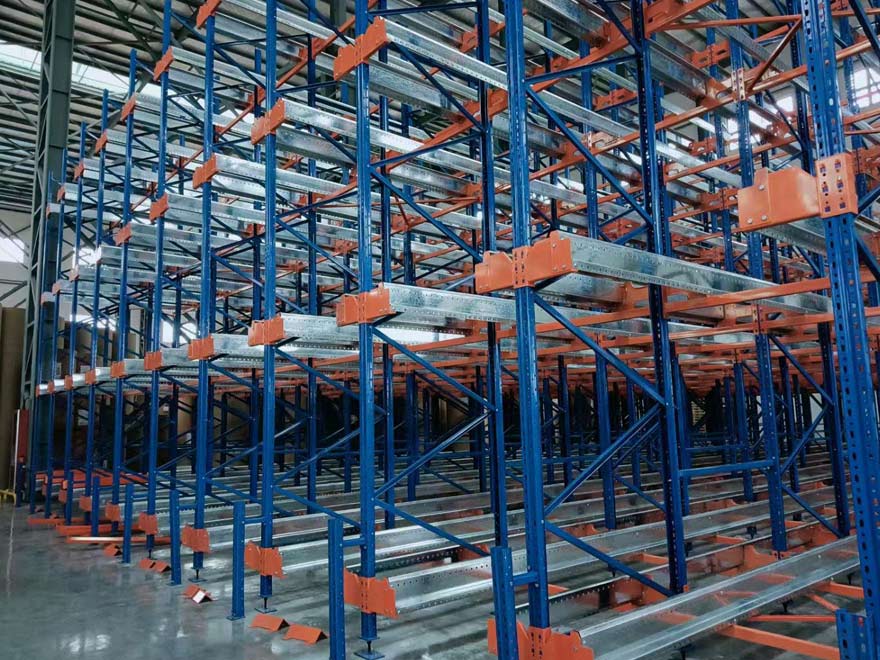Shuttle Racking

Warehouse Storage Racks
A high-density pallet storage system that stores and retrieves goods via a shuttle system is possible with the help of warehouse storage racks. These shuttles can be controlled by a radio-controlled remote control or by software systems connected via Wi-Fi. It runs under the pallets as it moves freely through the specially designed channel, picking up the pallet on its platform. Stackers, forklifts, reach trucks, and other equipment can be used to transport the shuttle between storage channels. Handling operations can be controlled remotely or via message using Warehouse Shelf Racks.
Automatic shuttle is able to move within the racking channels, offering high-density semi-automated storage. Controlled by an interactive radio transmitter that can load, unload and arrange pallets into the racking channels. Moved by the traditional forklifts. The shuttle operates in every channel according to the FIFO (First in First Out) and even LIFO (Last in First out) procedures. One of the best uses for the shuttle system is in refrigerated warehouses where temperatures can reach down to -30°. To optimize the cost/benefit ratio in such an environment, storage systems must maximize the number of pallets while minimizing the number of aisles.
Functions
FIFO
This is the most common storage method in the pharmaceutical and food industries where exact expiration dates to be managed. It facilitates picking of pallets containing goods produced earlier, so they are stored first. The shuttle operates in this function that allows storage from the front and picking from the opposite end of the racking system. Therefore, the two faces of the racks must be accessible for storage and picking.
LIFO
Storage method for goods without expiry dates, where the principle of first stocked, first picked does not apply. The shuttles operate functions allow storage and picking to occur on the same side of the rack. One rack side is required.
Advantages
- Working with FIFO and LIFO principles
- Different pallet sizes can be sequentially stored in the same channel
- High-speed storage / retrieval operation
- Attractive space utilization
- Less operational cost (labor and equipment)
- Lower risk of accident


 FSC India
FSC India